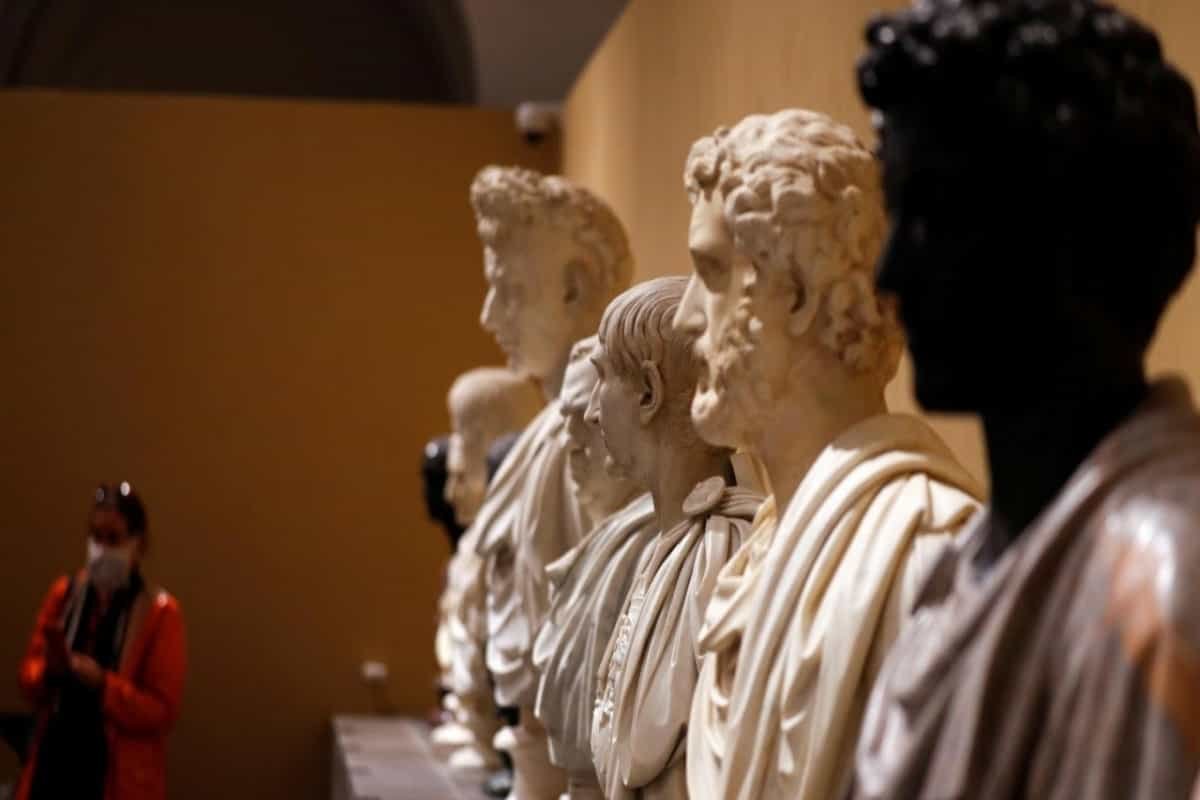After decades locked away in a basement, a variety of the simplest sculptures from antiquity are pulled from the gloom and returned to public view in Rome.
Busts of Roman emperors, intricate sarcophagi and an Ancient Greek relief carved 2,500 years ago are just a couple of of the 92 pieces on display within the city’s Palazzo Caffarelli.
The marbles belong to the aristocratic Torlonia family and represent a fraction of their 620 sculptures, believed to be the foremost important such private collection on the planet.
A statue from the “Torlonia Marbles” is seen during an exhibition that brings together some 96 ancient sculptures comprising of bronze, marble and alabaster statues in Rome, Italy.
A statue from the “Torlonia Marbles” is seen during an exhibition that brings together some 96 ancient sculptures comprising of bronze, marble and alabaster statues in Rome, Italy. ( REUTERS )
“We could do seven, eight, 15 more exhibitions,” said historian Salvatore Settis, who was picked by the family to help curate the show and had the difficult task of deciding which works should see the sunshine of day.
Like many leading Rome families, the Torlonias initially put their huge collection on display during a museum. But after 101 years, they locked its doors in 1976, looking to convert the building into private apartments.
“The reappearance of such a legendary collection could also be an important event,” said Settis. “When I saw them for the first time it had been very emotional because I knew most of those pieces from books, but I had never seen them.”
The Torlonias, who built their wealth off the rear of papal contracts, snapped up established collections, some dating back to the 15th century, and built up a group of collections.
A statue from the “Torlonia Marbles” is seen during an exhibition that brings together some 96 ancient sculptures comprising of bronze, marble and alabaster statues in Rome, Italy October.
Among the pieces on view could also be a fountain basin carved in ancient Greece that was believed to possess stood within the garden of Caesar when it had been already considered an antiquity.
Many of the works have undergone substantial restoration over the years, including a statue of a goat whose body dates to the first century AD but whose head is believed to possess been created by the famed 17th century Italian sculptor Bernini.
Anna Maria Carruba helped prepare the statues for the exhibition.
“Many of these pieces were already restored from 1600 onwards. We didn’t need to work on the structure of the statues but only on the surfaces, cleaning them, removing the dust that had accumulated over the years, and materials utilized in previous restorations,” she said.
A detail of a statue from the “Torlonia Marbles” is seen during an exhibition that brings together some 96 ancient sculptures comprising of bronze, marble and alabaster statues in Rome, Italy.
A detail of a statue from the “Torlonia Marbles” is seen during an exhibition that brings together some 96 ancient sculptures comprising of bronze, marble and alabaster statues in Rome, Italy. ( REUTERS )
The “Torlonia Marbles” show had been because to open in April but was pushed back thanks to the coronavirus. It runs in Rome until June 2021 and is predicted to maneuver on to a minimum of 1 other European country and thus us before returning to Italy where it’ll tend a permanent home.
Latest News and updates, Follow and connect with us on Facebook, Twitter, and Linkedin
Get the latest updates directly on your mobile, save and send a message at +91-9899909957 on Whatsapp to start





